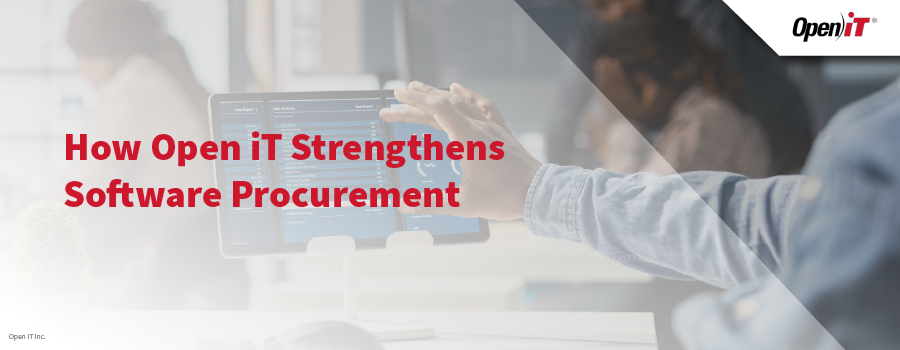As modernization accelerates, the agencies that adopt data-driven software procurement strategies will be best positioned to deliver secure, efficient, and future-ready services.
Federal agencies are under mounting pressure to modernize their software procurement strategies. The federal government allocated about $74 billion for IT spending in fiscal year 2024, nearly a 13% increase over the previous year. This sharp rise reflects the government’s drive to modernize mission-critical systems, strengthen cybersecurity, and advance digital services. Yet, it also highlights the complexity of federal software procurement, where agencies must balance innovation with compliance and fiscal accountability.
With multiple initiatives such as FedRAMP, SWFT, and OneGov shaping procurement policies, agencies need to carefully navigate licensing rules, vendor relationships, and compliance frameworks. Traditional procurement approaches often fail to keep pace with these evolving requirements. This is where a software asset management, like Open iT brings measurable value by helping agencies gain deep visibility into software usage, reduce waste, and align acquisitions with mandated programs and initiatives.
DEMO: How Open iT Brings Clarity to Software Procurement?
Four Major Software Procurement Challenges
Despite significant budget allocations, federal software procurement remains fraught with obstacles:
- Fragmented purchasing: Agencies often procure licenses independently, leading to duplicated costs and underutilized assets.
- Compliance risks: Non-adherence to standards like FedRAMP or requirements tied to SWFT and OneGov can expose agencies to penalties and delays.
- Rapid technology shifts: The adoption of cloud-based platforms and hybrid IT environments complicates license tracking and renewal cycles.
- Budgetary constraints: Even with increased IT funding, agencies must prove efficient and mission-aligned spending to oversight bodies.
The outcome is a system where licenses may sit idle, usage data is scattered, and compliance with government-wide mandates is inconsistent. Without a robust solution, agencies risk overspending and under-delivering on modernization goals.
FedRAMP, SWFT, and OneGov: Key Procurement Touchpoints
Any discussion of software procurement must account for the programs and frameworks that directly influence acquisition strategies:
- FedRAMP (Federal Risk and Authorization Management Program) ensures that cloud products meet strict security standards before agencies can deploy them. Procurement teams must validate that solutions not only hold authorization but are continuously monitored for compliance.
- SWFT (Secure Web Fingerprint Transmission), though operationally linked to personnel security, also impacts software procurement by enforcing strict standards for secure systems integration. Solutions that handle sensitive data must be aligned with SWFT-related mandates to ensure interoperability and protect classified or personally identifiable information.
- OneGov reflects the government’s broader push toward consolidated IT systems and shared services. Procurement under OneGov prioritizes interoperability, standardization, and cross-agency efficiency, requiring acquisition strategies that minimize redundancies.
Navigating these mandates demands precise tracking of software assets, verifiable compliance evidence, and the ability to justify procurement decisions based on both mission need and regulatory standards.
FedRAMP, SWFT, and OneGov provide critical guardrails, but the true differentiator lies in how effectively agencies can align federal software procurement with these frameworks.
How Open iT Strengthens Software Procurement

Open iT provides analytics-driven software license management solutions that enable federal agencies to modernize procurement processes while adhering to compliance requirements.
- Data-Driven Visibility
Open iT collects granular usage data across cloud, on-premises, and hybrid environments. By identifying who is using specific applications, for how long, and under what conditions, agencies gain the insights needed to eliminate waste and redeploy licenses where they are most impactful.
- Alignment with FedRAMP, SWFT, and OneGov
Open iT helps agencies maintain compliance with prevailing programs by documenting software usage and ensuring acquisitions support authorized and secure solutions. Detailed reports help procurement officers demonstrate compliance during audits and acquisition reviews.
- Optimized Budget Utilization
With civilian IT expenditures surging, agencies must show value for every dollar spent. Open iT highlights underused or idle licenses, guiding procurement teams to renegotiate contracts or reallocate resources in ways that align with mission-critical priorities.
- Future-Ready Procurement
As federal IT increasingly shifts toward cloud and subscription-based models, Open iT equips agencies with forecasting capabilities that anticipate future demand. This proactive approach prevents both overspending and shortages, ensuring procurement aligns with evolving digital strategies.
Building Trust Through Transparency
Transparency is a cornerstone of software procurement. Oversight bodies, auditors, and the public expect agencies to demonstrate how funds are spent and whether acquisitions comply with standards. Open iT enables agencies to:
- Produce clear, auditable reports that detail license usage.
- Provide evidence of compliance with government-mandated programs.
- Justify acquisition decisions with accurate usage and demand data.
Such transparency not only ensures accountability but also builds trust that taxpayer dollars are being used wisely and in alignment with federal mandates.
Case for Modernization Beyond Compliance
While compliance with FedRAMP, SWFT, and OneGov is essential, modernization efforts should not stop there. Agencies need procurement systems that are agile, scalable, and adaptive to new technologies. Open iT’s tools support continuous improvement by enabling:
- Scalable license tracking across diverse platforms.
- Predictive analytics that anticipate procurement needs.
- Continuous optimization of contracts to maximize ROI.
By leveraging these capabilities, agencies can move beyond a compliance-first mindset to one that prioritizes efficiency and future-readiness.
Supporting Mission Readiness Through Smarter Procurement
At the core of software procurement is the mission to support agencies in delivering services effectively. Open iT ensures that agencies have the right tools at the right time by aligning procurement with actual needs. This approach not only saves money but also enhances mission readiness by ensuring software availability.
In areas where delays or inefficiencies could compromise outcomes, Open iT provides the clarity and agility needed to maintain continuity. By enabling smarter, more efficient procurement, Open iT directly contributes to agency performance and public service delivery.
Get in touch with Open iT to know more.
How Open iT Brings Clarity to Software Procurement!






